Background
The International Day for Scientific Culture (IDSC) aims to highlight the importance of scientific literacy for citizens in today's world and to celebrate the activities and institutions that provide spaces for people to make science a relevant part of their lives.
In the midst of a global pandemic – as well as ongoing challenges such as climate change, energy demands, and sustainable societies – it is of paramount importance to engage and empower more and more people through science as a key means to informed decision-making to address such issues. Our efforts are critical to the future of humanity’s well-being and the health of our planet.
Though many individuals and institutions around the world continue to make substantial contributions to the public understanding of science, much more needs to be done. Therefore, in March 2020, a group of institutions, led by the Mexican Society for the Public Communication of Science and Technology (SOMEDICYT), launched the International Day for Scientific Culture initiative.
These institutions were, in addition to SOMEDICYT:
- MILSET (Mouvement International pour le Loisir Scientifique et Technique),
- National Network of Youth Activities in Science and Technology (Mexico),
- Mexican Network of Science Workshops,
- Fibonacci Innovation and Scientific Culture (Mexico),
- Foundation for the National Science and Technology Center CIENTEC (Costa Rica),
- National Nanotechnology Laboratory - National Center for High Technology (Costa Rica)
- Scientific Dissemination Unit of the National University of Distance Education - UNED (Costa Rica)
Dr. Julieta Fierro-Gossman, an outstanding member of SOMEDICYT who was awarded the Kalinga Prize by UNESCO in 1995 in recognition for her work in the popularization of science, joined these institutions.
28 September, the anniversary of the first broadcast of Carl Sagan's “Cosmos”, one of the most influential and popular TV programs in history, was chosen as the date for the annual International Day for Scientific Culture.
The first celebration of the International Day for Scientific Culture in 2020 took place through various activities carried out by several institutions in 9 countries in the Americas. In parallel to the institutional actions and events, hundreds of science communicators from these countries published their personal testimonies on social media.
For the second edition of the IDSC, the Promotion Committee issued invitations beginning in February 2021 to various institutions in the education and science and technology sectors, as well as to networks of researchers, educators and science communicators around the world. As a result, the 2021 celebration was held in 41 countries.
The third edition of the IDSC took place in 2022, involving 201 institutions (including six international organizations) from 33 countries on five continents through their actions and publications specifically designed to celebrate the Day. Moreover, 32 new institutions from seven countries, as well as three international networks formally joined the IDSC initiative, in addition to those that had already joined and participated in the two previous editions.
The profiles of these organizations were diverse: educational centers, universities, research centers, scientific associations, ministries and councils of science, secretariats of education, networks of science communicators, museum and science centers, teachers' associations, ministries of communication, NGOs dedicated to the public communication of science, and associations of professionals from various scientific disciplines.
Celebration of the IDSC in 2022
Organization
The campaign to join the celebration ran from June to September 2022. This year, 32 institutions from seven countries and three international networks formally joined the ICDC initiative, adding to those that had already joined and participated in 2020 and 2021.
[1]Argentina, Colombia, Costa Rica, United States of America, India, Malaysia and Mexico.
In addition to formally joining the initiative, these and other institutions were invited to organize activities to celebrate the International Day for Scientific Culture on 28 September 2022. Each institution was responsible for organizing its activities and disseminating them to the target audience, always including the IDSC logo to create an identity for the celebration.
A week before the celebration, science communicators, teachers, and researchers from countries on all five continents were also invited to record and publish a short video with their views on the importance of science popularization and how they used science and technology in their lives. Hundreds of science communicators, researchers, teachers, and directors of various organizations posted their messages on their institutional and personal social networks.
Finally, as a global launch, the Promotion Committee produced and released an animated video to mark the celebration. This inaugural video can be viewed at:
Other videos shared by participating organizations and professionals can be viewed on the celebration's YouTube channel:
https://www.youtube.com/@internationaldayofscientif5537/videos
Activities in the IDSC 2022
The Promotion Committee recorded the activities reported by many organizations that had joined the celebration in a global catalogue. In addition, it learned of various activities and actions on social media from other groups and institutions that did not register their activities. Some activities were spread over several days after September 28th, but took place within the framework of the celebration; and there were organizations that said they would carry out activities but did not report them to the Committee. Therefore, the total number of activities carried out is unknown. However, below are data on the participation in the celebration and some graphs of the type of activities carried out, as well as the audiences they were aimed at.
384 registered activities,both face-to-face and virtual, in different formats, were grouped into 12 categories:
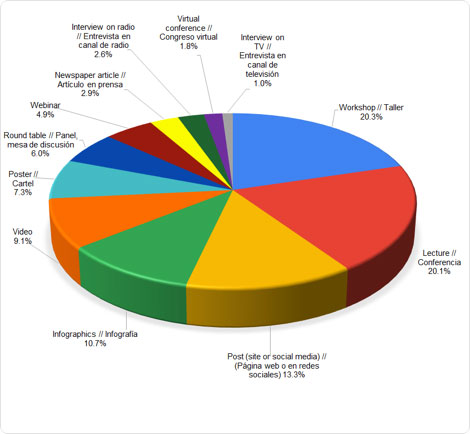
Figura 1. Figure 1. Proportions of activities - IDSC 2022.
Based on the online registry
The interactive map are available on the event's website: https://www.somedicyt.org.mx/divulgacion/dicc
Audiences
The activities carried out by the participating institutions focused on different audiences and social actors. The main ones were the school communities (students and teachers):
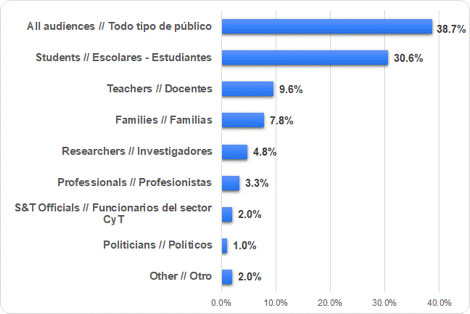
Figura 2. Figure 2. Audiences targeted by the activities of the IDSC 2022.
Percentage of activities targeted to each type of audience.
Based on the online registry
Diffusion
Two strategies were applied to publicize the celebration and its activities:
The first was the preparation of a communiqué with general information, so that each institution could customize it to indicate its participation in the event, the activities it would carry out and its contact information. This communiqué was released in the third week of August (6 weeks before the celebration).
The second strategy was the dissemination on social networks, both those managed by the Promotion Committee and those of the participating organizations in IDSC 2022. To this end, some graphic elements were designed and hashtags were defined, all of which were shared with participating organizations, also in the third week of August. In addition, the IDSC 2022 Promoting Committee produced a short video about the celebration.
The following are some of the graphic materials developed for dissemination in social networks.
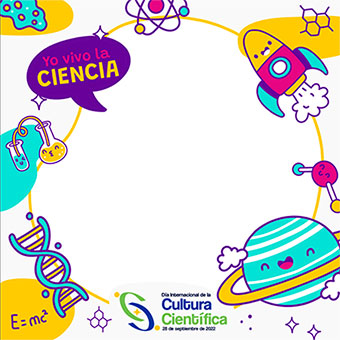
Frame for profile pictures on social networks (Spanish)
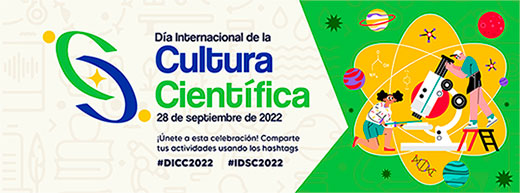
Banner for social networks
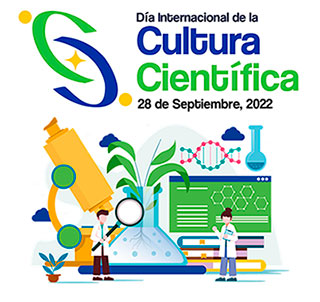
Banner for social networks
The hashtags defined were:
#IDSC2022 and #DICC2022
Labels of the official profiles on social networks:
Facebook: https://www.facebook.com/IDSciCult
Instagram: https://www.instagram.com/idscicult/
Twitter: https://twitter.com/IDSciCult
From September 26 to October 1, many of the events held in different parts of the world were shared by participating organizations that tagged their events with the hashtags.
Countries involved
A total of 202 organizations in 33 countries,including 6 international organizations[2]participated in the celebration of the IDSC 2022:
[2] This is more than the number of organisations that have formally joined the IDSC initiative.

List of participating organizations
International organizations
- “Ciencia Joven” Foundation (Argentina-Uruguay)
- Ibero-American Science Organization
- International Life Sciences Institute (ILSI – Mesoamerica)
- Latin American Society of Science and Technology (SOLACYT)
- Mouvement International pour le Loisir Scientifique Et Technique (MILSET)
- Network for the Popularisation of Science and Technology in Latin America and the Caribbean (RedPOP)
Africa
- Association des Petits Débrouillards de Fès pour le développement durable (l'APDFes), Morocco
- Association Marocaine des Petits Débrouillards (AMPD), Morocco
- EYE-Namibia, Namibia
- Ligue des Activités Scientifiques et Techniques de Jeunes de Tizi Ouzo Algérie, Algeria
- Science&Development, Morocco
Asia:
- Bardhaman Science Centre, India
- Birla Industrial & Technological Museum (UNSM), India
- Buca Municipality / Kızılçullu Science and Art Center (BUCA IMSEF), Türkiye
- Dhenkanal Science Centre (NCSM), India
- District Science Centre, India
- District Science Centre, Purulia (NCSM), Indi
- District Science Centre, Tirunelveli (NCSM), India
- ESA UNGGUL University, Indonesia
- Evrensel College, Türkiye
- Goa Science Centre and Planetarium, Panaji, India
- Guru Nanak College of Arts, Science and Commerce (GNC), India
- Kurukshetra Panorama & Science Centre, India
- Kuwait Environment Protection Society, Kuwait
- Mouvement International pour le Loisir Scientifique Et Technique - Asia, Kuwait
- National Association for Science and Research, Lebanon
- National Council of Science Museums (NCSM), India
- National Science Centre, Delhi, India
- Nehru Science Centre, Mumbai, India
- North Bengal Science Centre, Siliguri (NCSM), India
- Palampur Science Centre, Palampur (UNCS), Ministry of Culture, India
- Petrosains Sdn Bhd, Malaysia
- Raman Science Centre & Planetarium Nagpur, India
- Regional Science Centre and Planetarium Calicut (NCSM), India
- Regional Science Centre, Bhubaneswar, Odisha, India
- Regional Science Centre, Bhopal (NCSM), India
- Regional Science Centre, Guwahati (NCSM), India
- Regional Science City Lucknow, India
- Science City, Kolkata, India
- Shrikrishna Science Centre, Patna (NCSM), India
- Vikram Sarabhai Innovation and Research Foundation, India
- Visvesvaraya Industrial & Technological Museum (NCSM), India
Europe
- AEC2 - Spanish Association of Scientific Communication, Spain
- ADItech - Navarra R&D&I System, Spain
- All-Russian Movement of Creative Teachers "Researcher", Russia
- Andalusian Historical Heritage Institute - Consejería de Cultura, Andalusian Regional Government (IAPH), Spain
- Biomedical Research Networking Center (CIBER-ISCIII), Spain
- CienciaULL – University of La Laguna, Spain
- Coslada Culture, Spain
- Culture Science, Switzerland
- CYGNUS Scientific Society – UNESCO Center, Romania
- DesQbre Foundation, Spain
- FEDIT - Network of Technology Centres of Spain
- Fundació Catalana per a la Recerca i la Innovació (FCRI), Spain
- Geosciences Barcelona – CSIC, Spain
- Institut de Ciènces del Cosmos (ICCUB)- Universitat de Barcelona, Spain
- Institut de Química Avançada de Catalunya, Spain
- Institute for Research in Biomedicine (IRB) – Barcelona, Spain
- Knowing about Agriculture and Livestock - Agricultural Editorial Group, Spain
- Microbacterium, Spain
- MILSET Romania, Romania
- Nanoinventum, Spain
- National Technological Centre for Canned Food – CTC, Spain
- R+D Explainers Group, Spain
- ReCreo STEAM, Spain
- Robotical, Scotland
- Science for Change, Spain
- Science Museum of the University of Navarra, Spain
- Scientific Culture Unit - Autonomous University of Madrid, Spain
- Scientific & Innovation Culture Unit - Complutense University of Madrid, Spain
- Scientific Culture and Innovation Unit - University of Castilla-La Mancha (UCLM), Spain
- Scientific Culture and Innovation Unit - University of Huelva (UCC+i UHU), Spain
- Scientific Culture and Innovation Unit - University of La Laguna, Spain
- Scientific Culture and Innovation Unit - University of Salamanca, Spain
- The University of Warwick, England
- Technological Center for Furniture and Wood (CETEM_CL), Spain
- Universitat de Barcelona, Spain
- University of Jaen, Spain
Americas
- Alzate and its People A. C., Mexico
- Arts Center, Mexico
- Atomium, Science Communicators Network, Mexico
- Autonomous Metropolitan University - Office for the Dissemination of Science and Humanities, Mexico
- Autonomous University of Chiapas (UNACH), Mexico
- Autonomous University of La Laguna, Mexico
- Autonomous University of La Laguna High School, Mexico
- Autonomous University of Queretaro (UAQ), Mexico
- Autonomous University of San Luis Potosi (UASLP), Mexico
- Avanciencia, Colombia
- AXIO, Mexico
- Barbara McClintock Institute of Genetics, Peru
- Biological Research Institute Clemente Estable, Uruguay
- Biologists Doing Things, Mexico
- Bioscience Wild, Mexico
- Bolivarian Pontifical University, Colombia
- Cambalache Magazine, Universidad de Santiago de Chile
- Center for Research in Mathematics (CIMAT), Mexico
- Chilean Association of Journalists and Professionals for Science Communication, Chile
- CIENTEC Peru
- Ciencia Cakotanú Magazine - Ciencia Cakotanú, A.C., Mexico
- Científicos.pe, Peru
- College of Scientific and Technological Studies of the State of Tlaxcala 10 (Yauqueman), Mexico
- Colima State Council for Science and Technology, (CECYTCOL), Mexico
- Communicating Science Chile, Chile
- Costa Rican Association of Members of the Biotechnology, Life Sciences and Medical Devices Industry, Costa Rica
- Costa Rican Science and Technology Olympiad (OLCOCI), Costa Rica
- Council of Science and Technology of the State of Morelos (CCYTEM), Mexico
- Council of Science and Technology of the State of Puebla (CONCYTEP), Mexico
- Council of Science and Technology of the State of Queretaro (CONCYTEQ), Mexico
- Council of Science and Technology of the State of Tabasco (CCYTET), Mexico
- Council of Science, Technology and Innovation of the State of Hidalgo (CITNOVA), Mexico
- Cultural Institute of Buenos Aires Province, Argentina
- Curiosciences, Mexico
- Da Vinci Science Center, United States of America
- DNA Learn and Discover Nature, Mexico
- Directorate for Knowledge Communication, Autonomous Metropolitan University (UAM), Mexico
- Directorate for the Dissemination of Science and Technology, National Polytechnic Institute (IPN), Mexico
- DiVU A.C., Mexico
- Divulgaciencia, México
- Divulgologas, Mexico
- EAFIT Children´s University, Colombia
- EcoExploratorio, Puerto Rico
- Education, Health, Science, Technology and Innovation District – Hidalgo, Mexico
- El Rehilete Interactive Museum, Mexico
- El Trompo - Interactive Museum of Tijuana, Mexico
- Ensenada Centre for Scientific Research and Higher Education (CICESE), Mexico
- Espacio Ciencia, Uruguay
- Eugreka – University of Guanajuato, Mexico
- Explora Science & Design, Chile
- ExpoSciences Bajío A.C., Mexico
- ExpoSciences Michoacan, Mexico
- Fibonacci • Innovation and Scientific Culture, A.C., Mexico
- Foundation for the National Science and Technology Center (CIENTEC), Costa Rica
- Geneall - Israeli Institute of Education and Research Albert Einstein, Brazil
- Get Into Biology, Mexico
- Graphological Research Centre, Argentina
- Hidalgo Young Entrepreneurs, A.C., Mexico
- High Technology National Center (CENAT), Costa Rica
- I love de Ocean, Mexico
- Imaginario Interactive Museum of Science, Technology and Society (UNGS), Argentina
- Industrial and Services Technological High School (CBETIS 49), Mexico
- Institute for Innovation and Technology Transfer of Nuevo León (i2T2), Mexico
- Institute of Science, Technology and Innovation, Mexico
- Interactive Science and Technology Centre Abremate, University of Lanus, Argentina
- Inter-American School and College of Science (IHS CATIE) and EARTH Campus, Costa Rica
- Inter-American University for Development (UNID), Peru
- International Council for Disruptive Science and Technology, A.C., Mexico
- Juarez Autonomous University of Tabasco (UJAT), Mexico
- Knowledge in Territory - Inter-University Project on Scientific Culture, Argentina
- LAMAT Science Communication, Mexico
- La Salle French Institute, Mexico
- Maloka Interactive Museum, Colombia
- Materials Research Institute – National Autonomous University of Mexico (UNAM), Mexico
- Mexican Association of Science-Technology Museums and Centers (AMMCCYT), Mexico
- Mexican Institute for Social Security (IMSS), Mexico
- Mexican Society for the Communication of Science and Technology (SOMEDICYT), Mexico
- Mexican Society of Physicists in Medicine, Mexico
- Mexico City's Secretariat of Education, Science, Technology and Innovation (SECTEI), Mexico
- Michoacan Lyceum, Mexico
- Ministry of Foreign and Religious Affairs, Costa Rica (Embassies in Germany, Chile, France, Guatemala, Japan, Kenia, Netherlands, Oceania, Panama, Russian Federation) – Costa Rica
- Mundo Nuevo, Science Popularization Program, National University of La Plata, Argentina
- Museum of Astronomy and Related Sciences (MAST), Brazil
- Museum of Environmental Science, University of Guadalajara, Mexico
- Museum of Natural History and Environmental Culture of Mexico City (MHNCA), Mexico
- National Academy of Sciences of Costa Rica (ANC), Costa Rica
- National Council for Science, Technology and Technological Innovation (CONCYTEC), Peru
- National Informal STEM Education Network (NISE), United States of America
- National Laboratory of Nanotechnology - National Centre for High Technology (LANOTEC), Costa Rica
- National Network of State Science and Technology Councils and Institutions A.C. (REDNACECYT), Mexico
- National School of Higher Education – Morelia Campus, UNAM (ENES-Morelia UNAM), Mexico
- National Secretariat for Science, Technology and Innovation (SENACYT), Panama
- National Technological Institute of Mexico – Colima Campus (TECNM), Mexico
- National University of Colombia - Faculty of Sciences, Colombia
- Natural History Museum of Merida City Council, Mexico
- “Nicolas Copernicus" Astronomical Society, Mexico
- Oaxacan Council of Science, Technology and Innovation (COCITEI), Mexico
- Panamanian Association of Science Journalists and Communicators (APANPECC), Panama
- Papagayo Interactive Museum, Mexico
- Pillars CDMX, Mexico
- Popular Autonomous Autonomous University of the State of Puebla A.C. (UPAEP), Mexico
- Polytechnic University of Pachuca, Mexico
- Radiounr - University of Rosario, Argentina
- Recreación en Cadena - Mexican Network of Science Recreation Workshops, Mexico
- ROBOTRIM, Mexico
- Science in Atoms, Mexico
- Science in a Click, Mexico
- Science Magazine. Faculty of Science – UNAM, Mexico
- Science Museum of the Autonomous University of Zacatecas, Mexico
- Science Museum of Morelos, Mexico
- Science Outreach Magazine PaCiencia Pa'Todos (Science for All) – UNAM, Mexico
- Science Outreach Network of Northern Mexico, Mexico
- Scientific Stand up, Mexico
- Secretariat of Education of the State of Chiapas, Mexico
- Sinaloa Science Center, Mexico
- Southcalifornian Council of Science and Technology (COSCYT), Mexico
- Standing Committee on Medical Publications of the Mexican Association of Doctors in Training A.C., Mexico
- Synapses Network, Mexico
- Teach me about Science, Mexico
- Universitarios Magazine – UASLP, Mexico
- University Science Club of the Division of Engineering and Architecture CUC DAIA, Mexico
- University of Veracruz (UV) -Directorate of Science Communication, Mexico
- Universum - Science Museum of the UNAM, Mexico
- Vagabond Laboratory, Mexico
- Women into Space, Mexico
- Young Scientists for Puerto Rico, Puerto Rico
- Youth Science and Technology Activities National Network, Mexico
- Zacatecan Council of Science, Technology and Innovation (COZCYT), Mexico
- ZigZag - Interactive Centre for Science and Technology, Mexico
Agradecimientos especiales
El Comité Promotor agradece de manera especial la colaboración de las siguientes personas:
Brenton Honeyman
José Eduardo González Rayes
Recreación en Cadena
Esteban López Jiménez
Sociedad Mexicana para la Divulgación de la Ciencia y la Técnica
José Alberto García Torres
Movimiento Internacional para el Recreo Científico y Técnico MILSET
Pamela González Moreno
Estudiante de Diseño Gráfico y Digital,
Universidad Popular Autónoma del Estado de Puebla
Nancy Luz Ramírez Cano
Estudiante de Diseño Gráfico y Digital
Universidad Popular Autónoma del Estado de Puebla
Carmen L. Claramunt Garro,
Embajadora, Ministerio de Relaciones Exteriores y Culto, Costa Rica.
Comité Promotor del Día Internacional de la Cultura Científica
MA. DE LOURDES PATIÑO-BARBA
Sociedad Mexicana para la Divulgación de la Ciencia, A.C. (SOMEDICYT)
Ciudad de México, México
ALEJANDRA LEÓN-CASTELLÁ
Fundación para el Centro Nacional de Ciencia y Tecnología (CIENTEC)
San José, Costa Rica
ROBERTO HIDALGO-RIVAS
Mouvement International pour le Loisir Scientifique Et Technique (MILSET), Internacional
Red Nacional de Actividades Juveniles en Ciencia y Tecnología | Puebla, México
MIGUEL GARCÍA-GUERRERO
Recreación en Cadena (Red Mexicana de Ciencia Recreativa)
Zacatecas, México
JOSÉ ROBERTO VEGA-BAUDRIT
Laboratorio Nacional de Nanotecnología-Centro Nacional de Alta Tecnología (LANOTEC)
San José, Costa Rica
JORGE PADILLA-GONZÁLEZ
Fibonacci • Innovación y Cultura Científica, A.C.
León, México






